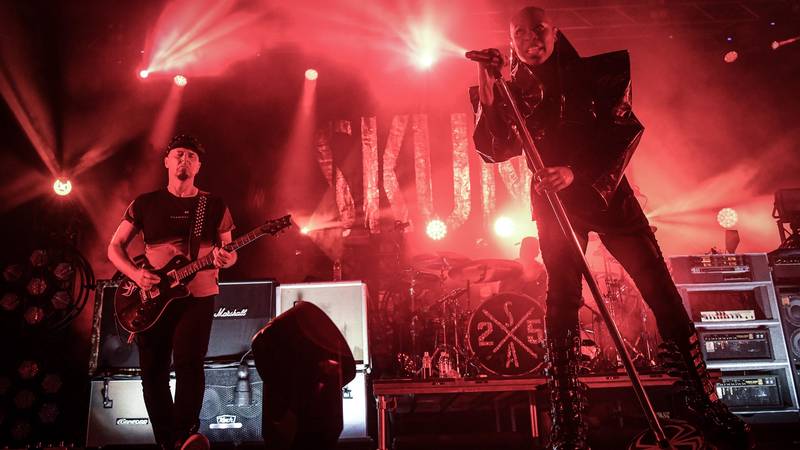The Journey of Hope: Women who risk everything to reach Europe

Increasingly greater is the number of female immigrants found to try to go to Europeputting their lives in immediate danger, aiming for a better tomorrow.
Many times death is the tragic end of this superhuman effort.
The maximum risk for a future in Europe
The four women and the three girls were just a few meters from the pier at the La Restinga port in El Hierro, one of the Canary Islands of Spain, when they drowned on May 28. Rescue teams had begun to land the first people early in the morning when the boat was overthrown.
Photos and videos from the chaotic scenes show the boat partially immersed and completely overturned, with many people struggling to swim around him and others trying to climb it. From below, about 15 women and girls were trapped and struggled to come to the surface. Seven did not succeed.
The boat used to transport immigrants. Reuters/Borja Suarez
After a 10 -day trip from the West Coast of Africa, 145 people on board were able to land, but the seven women and children were buried in three cemeteries in El Hierro, he says Guardian post.
Deaths shocked an island that quickly became the outbreak of the European migratory crisis. As the EU is trying to crash migratory flows through the Mediterranean, more and more people are resorting to crossing the Atlantic to reach the Canary Islands – one of the most dangerous passes to Europe. More than 20,000 immigrants arrived at El Hierro in 2024, according to the Red Cross – almost twice as high as the island’s population.
The incident also shed light on the large number of women and girls who are now attempting the long and dangerous migratory route from Africa. They were almost half of the passengers of the upcoming boat.
Increased percentage of women who make the uncertain trip
By 2021, almost 15% of irregular entrances to the Canary Islands were women, according to data collected by the Spanish Committee on Refugee Aid (CEAR). Most of them come from the Sahel area, according to the UN refugee service, which states that escalating conflicts have forcefully displaced millions of people from Burkina Faso, Niger and Mali.
Human rights groups say that more and more women are now being found on migratory routes from Africa, motivated by well -known issues of armed conflict and poverty, as well as unique problems, such as escaping gender violence and forced marriage. « Women become the main protagonists in their own immigration process, while in the past there were usually men who migrated first and women were later integrated, » says Juan Carlos Lorenzo, CEAR’s coordinator.
Madelin, who was traveling with her five -year -old niece on the upside down boat, told the Guardian that she decided to leave after her husband abandoned her. He was criticized by his family when he began looking for a job. « They said that I was seeing other men, which was not true. I couldn’t stand it anymore and I made the decision. «

People embrace the mother of 12 -year -old immigrant Fatumata Banaro during her funeral. Reuters/Borja Suarez
At that time she was taking care of her niece and decided that it would be better to come. « When her mother died, the family wanted to take the girl to undergo genital amputation, but I refused to accept it. When I said no, they started fighting a lot against me. I couldn’t leave my niece there, so I brought it with me. «
Madeleine said she was on the deck of the boat when it was overthrown. They both fell into the water, where Madeleine claimed that she initially tried to hold her niece tightly, but was forced to leave her because she could not hold her own head over the water. « I started screaming and crying. I had the girl in my arms, but we were both sinking. I let her go. » Eventually, they were both rescued.
The little girl was taken alone to a Tenerife hospital after drinking a lot of seawater, says Madeleine, who was separated from her, and was recognized in the police camp where immigrants are being held and processed in El Hierro. Reunited three days later.
Struggle for survival
Other women from the boat were cautious and did not want to go into details about the reasons why they left Africa. Sira, who was one of the women who were trapped under the boat when she was overthrown, says she left Guinea to help her family and give her two daughters of four and seven years old. He says that he traveled in indoors in the boat, usually used for fish storage, but were reused for women and children during the trip. When the boat turned over, he says, many women struggled to breathe.
« Inside, there was a lot of water. We were held by ropes to lift our heads and breathe. My daughters were at the top of the boat- they were no longer with me at the bottom because (rescue teams) had asked for the children to land. They fell into the water, but I stayed in, « says Sira.

Immigrants are served in the Cate (CATEIFICATION Center) in Spain. Reuters/Borja Suarez
Sira’s four -year -old daughter was one of the kids who drowned.
Initially, rescue teams focused on helping those who had fallen into the sea without being able to see the people who were still trapped under the boat, as shown in the shots broadcast by various television channels at the time. But after the boat turned over again, several locals jumped in to help, pulling one person after another. Among those who reached out their hands to be saved was Sira. « It was then that they saved me, » she says.







